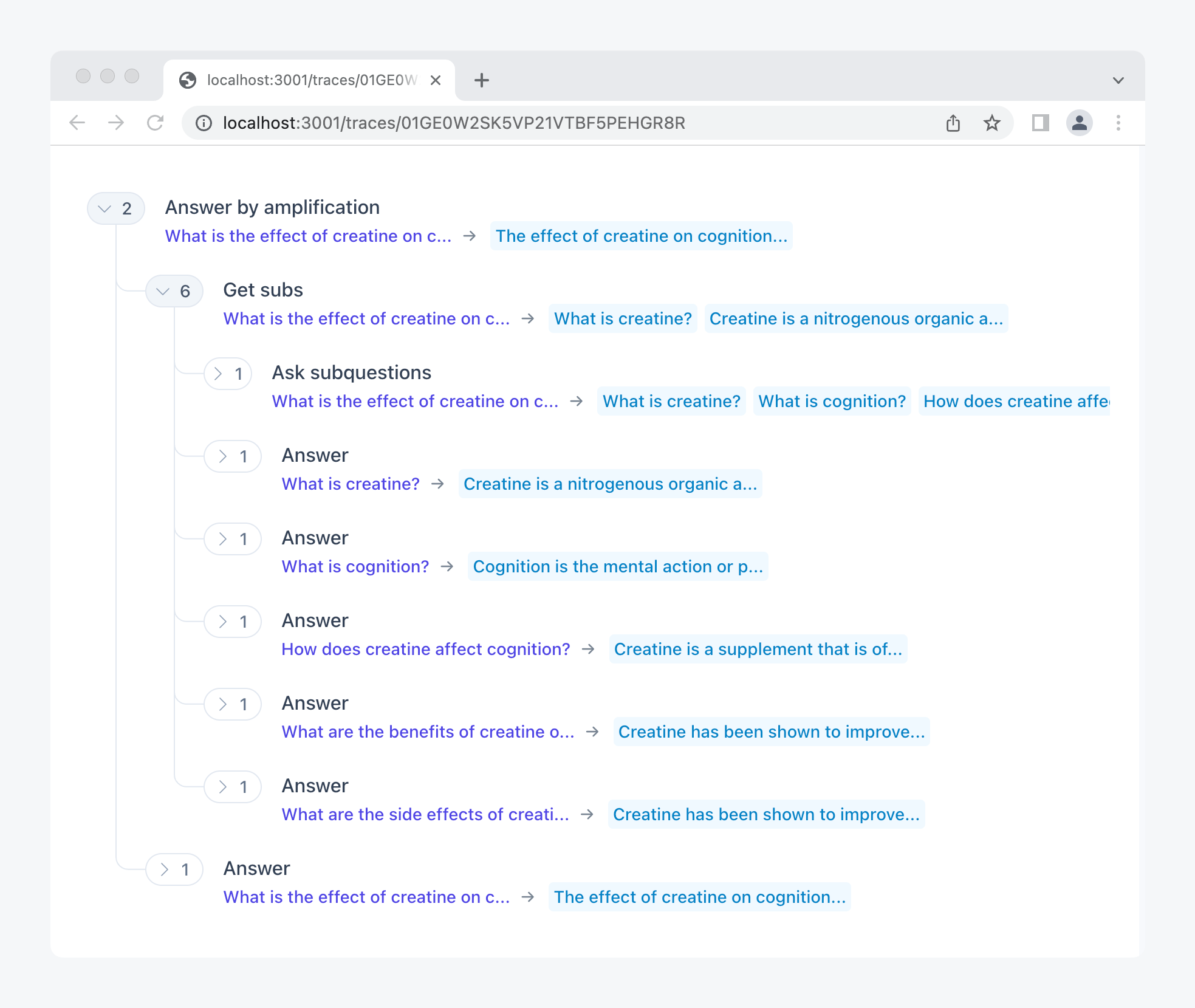Interactive Composition Explorer
Project description
Interactive Composition Explorer 🧊
ICE is a Python library and trace visualizer for language model programs.
Screenshot

Features
- Run language model recipes in different modes: humans, human+LM, LM
- Inspect the execution traces in your browser for debugging
- Define and use new language model agents, e.g. chain-of-thought agents
- Run recipes quickly by parallelizing language model calls
- Reuse component recipes such as question-answering, ranking, and verification
ICE is pre-1.0
:warning: The ICE API may change at any point. The ICE interface is being actively developed and we may change the API at any point, including removing functionality, renaming methods, splitting ICE into multiple projects, and other similarly disruptive changes. Use at your own risk.
Requirements
ICE requires Python 3.10. If you only have newer or older version(s) of Python installed, we recommend using pyenv to install Python 3.10 and manage multiple Python versions.
If you use Windows, you'll need to run ICE inside of WSL.
Getting started
-
As part of general good Python practice, consider first creating and activating a virtual environment to avoid installing ICE 'globally'. For example:
python3.10 -m venv venv source venv/bin/activate
-
Install ICE:
pip install ought-ice
-
Set required secrets in
~/.ought-ice/.env. See.env.examplefor the format. -
Start ICE in its own terminal and leave it running:
python -m ice.server
-
To learn more, go through the Primer.
Developing ICE
-
If you want to make changes to ICE itself, clone the repository, then install it in editable mode:
python3.10 -m venv venv source venv/bin/activate pip install --upgrade pip pip install -e '.[dev]' --config-settings editable_mode=compat npm --prefix ui ci npm --prefix ui run dev
Terminology
-
Recipes are decompositions of a task into subtasks.
The meaning of a recipe is: If a human executed these steps and did a good job at each workspace in isolation, the overall answer would be good. This decomposition may be informed by what we think ML can do at this point, but the recipe itself (as an abstraction) doesn’t know about specific agents.
-
Agents perform atomic subtasks of predefined shapes, like completion, scoring, or classification.
Agents don't know which recipe is calling them. Agents don’t maintain state between subtasks. Agents generally try to complete all subtasks they're asked to complete (however badly), but some will not have implementations for certain task types.
-
The mode in which a recipe runs is a global setting that can affect every agent call. For instance, whether to use humans or agents. Recipes can also run with certain
RecipeSettings, which can map a task type to a specificagent_name, which can modify which agent is used for that specfic type of task.
Additional resources
-
Join the ICE Slack channel to collaborate with other people composing language model tasks. You can also use it to ask questions about using ICE.
-
Watch the recording of Ought's Lab Meeting to understand the high-level goals for ICE, how it interacts with Ought's other work, and how it contributes to alignment research.
-
Read the ICE announcement post for another introduction.
Contributions
ICE is an open-source project by Ought. We're an applied ML lab building the AI research assistant Elicit.
We welcome community contributions:
- If you're a developer, you can dive into the codebase and help us fix bugs, improve code quality and performance, or add new features.
- If you're a language model researcher, you can help us add new agents or improve existing ones, and refine or create new recipes and recipe components.
For larger contributions, make an issue for discussion before submitting a PR.
And for even larger contributions, join us - we're hiring!
Project details
Download files
Download the file for your platform. If you're not sure which to choose, learn more about installing packages.
Source Distribution
Built Distribution
Hashes for ought_ice-0.4.0-py3-none-any.whl
| Algorithm | Hash digest | |
|---|---|---|
| SHA256 | e70fd33465b15686f1a4f654e2e20df34a1e6566191c689718f49dbbef1bdfc1 |
|
| MD5 | f8730ac6f1df13e1db32a2283cfc3731 |
|
| BLAKE2b-256 | 1b272358d3d41e66a68587035a0311d7398b7c49889db2b4bdfefeefa76e9334 |













